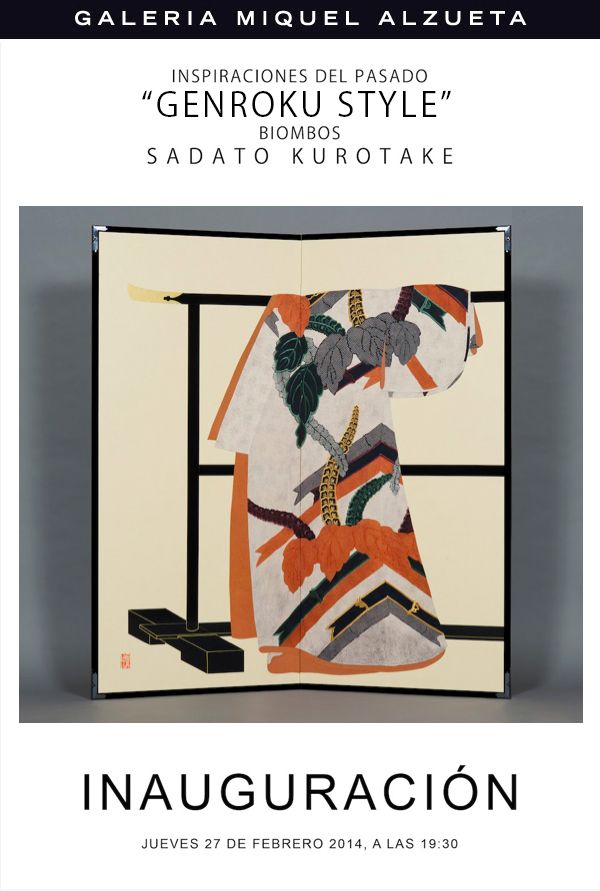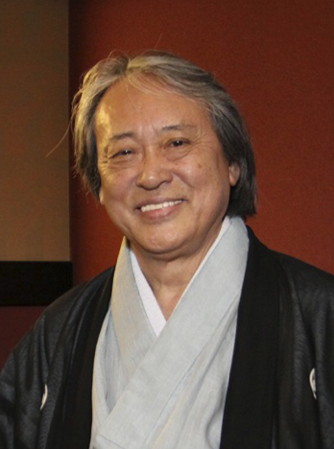GALLERY MIGUEL ALZUETA BARCELONA. Genroku kosode style, in particular, can be considered the origin of the modern kimono. This style flourished from the Momoyama period (1573-1615) to the early Edo period (1615-1868). Its designs have been passed down as a symbol of wealth and authority as well as a source of the unique Japanese sense of beauty. The designs are scattered over the entire garment extending to the bottom of the kimono giving it a compelling robustness and are in harmony with Yuzen dyeing, a method of fabric dying invented in the middle of the Edo era (around 1700).

Gallery Miguel Alzueta - Barcelona, Spain 2014
Coordinators: Jacqueline Okuma & Xavier Jansana
Genroku kosode style, in particular, can be considered the origin of the modern kimono. This style flourished from the Momoyama period (1573-1615) to the early Edo period (1615-1868). Its designs have been passed down as a symbol of wealth and authority as well as a source of the unique Japanese sense of beauty. The designs are scattered over the entire garment extending to the bottom of the kimono giving it a compelling robustness and are in harmony with Yuzen dyeing, a method of fabric dying invented in the middle of the Edo era (around 1700). These designs characterize the great strides being made in the beauty and techniques of Japanese dyeing and weaving compliment with designs conceived under the influence of Japan's four seasons, its customs, and its history.
This exhibition present folding screens reflecting this kind of beauty and sensibility which illuminate the history of Japan. It is a way to bestow a perfect sense of Japanese beauty to future craftsmen. These Genroku kosode folding screens embodying more than 300 years of history will hopefully be passed down man generations into the future.

Sadato Kurotake
Kurotake was born and raised in the historic heart and cultural capital of Japan, Kyoto, and this is where he flourished.� He founded the Kurochiku Group as well as being the Director General of the Kyoto International Craft Center, Tourism Ambassador for Kyoto, and Deputy Director of the Special Committee for the Conservation of Kyoto City. His versatility doesn't stop there, at his core he is an artist and he exercises his craft everyday by creating, designing, producing, reforming and innovating art, always faithful to traditional Japanese concepts. His country is his passion, and his life is his expression of it. The pieces below were designed by Kurotake and hand made by artisans in Kyoto.
About Author
related articles
Reader's Comments.